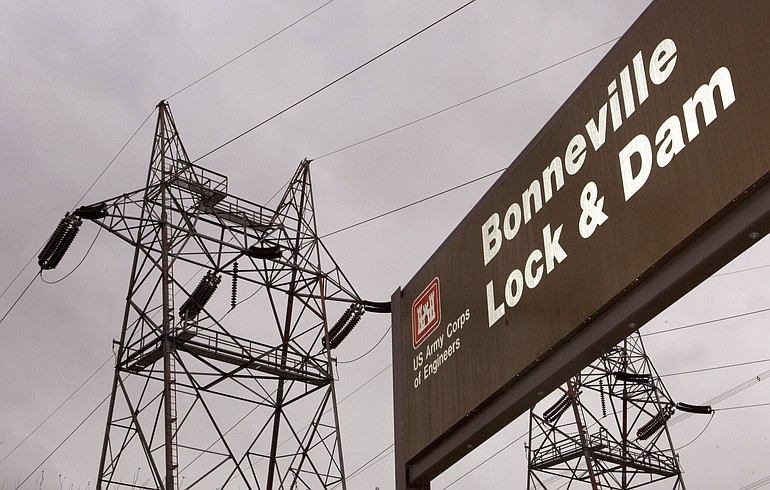Many words were exchanged but few minds appeared to have been changed Sunday after a capacity crowd packed the auditorium at Prairie High School to talk about the Bonneville Power Administration’s plan to run new high-voltage power lines through Southwest Washington.
At least two opposition groups have formed in response to the federal power marketing agency’s I-5 Corridor Reinforcement Project, which would beef up power transmission capabilities between Castle Rock and Troutdale, Ore., for the first time in 40 years. One group, www. nowaybpa.com, plans an April 29 rally. The other, www.stoptowersnow.com, sponsored Sunday’s event, which drew more than 700 people.
Michele Black, a Highlands neighborhood resident and business owner who emceed Sunday’s event, said that opponents don’t plan to unplug from the regional electric grid. “But there needs to be a balance,” she said, adding to loud applause that the federal agency could choose to route its new lines far to the east of the populated area.
o Previously: Neighbors reacted sharply to plans for new high-voltage transmission lines near schools and their homes.
o Previously: Neighbors reacted sharply to plans for new high-voltage transmission lines near schools and their homes.
o What's new: More than 700 people turned out to learn more about the proposal Sunday.
o What's next: An opposition group, www.nowaybpa.com, plans a protest rally for 11 a.m Thursday at BPA offices at 7600 N.E. 41st St. in Vancouver.
o What’s new: More than 700 people turned out to learn more about the proposal Sunday.
o What’s next: An opposition group, www.nowaybpa.com, plans a protest rally for 11 a.m Thursday at BPA offices at 7600 N.E. 41st St. in Vancouver.
Opposition to the BPA corridor project seemed to fall under two basic scenarios: dangers posed to nearby homes and schools due to electomagnetic radiation, and lowered property values due to the possible health risk and the unsightliness of the towers. The towers, approximately five per mile, would be as tall as a 15-story building.
Dr. Samuel Milham, a retired state epidemiologist and author of a forthcoming book called “Dirty Electricity,” said that several studies have suggested there is a link between electromagnetic radiation emitted by power lines and elevated risks of cancers, including childhood leukemia. Though he presented some scientific information, a photo of fluorescent light tubes, stuck into the ground under a high-voltage power line, drew the most response from the attentive crowd. The bulbs glowed with the power radiated from the lines.
“If it’s lighting up a phosphor, think of what it is doing to you,” said Milham. “My expert advice is not to allow construction of this line.”
But BPA project manager Mark Korsness noted that no direct cause-effect relationship has ever been proven between electromagnetic radiation and cancer risk. He also pledged the BPA would analyze the risk and include all previous studies in a draft environmental impact statement about the project. That statement is due sometime next year; a final decision on the project would come in 2012.
Diminution of home value was another thread of Sunday’s discussion. Realtor Doug Palin, another of the invited speakers, said by what he’s been told by agents, between 70 percent and 90 percent of home buyers won’t even consider a home near a transmission line. “How much does that affect your property values? No one really knows,” he added.
In response to audience questions, Korsness said engineers ruled out running the power line along the bottom of the Columbia River because the shipping channel is continually dredged and the riparian areas near shore are important fish and wildlife habitat. He said the BPA will consider a buried line, but doing so costs 10 to 15 times more than an overhead line and also poses unique maintenance and operations challenges.
Project opponent Richard van Dijk of Brush Prairie drew the biggest round of applause when he questioned whether the BPA needs more capacity to serve Clark and Cowlitz counties — or its customers in Oregon and California.
“Put it in Portland or put it all the way east and cross it at Bonneville (Dam) where it doesn’t bother anyone in Clark or Cowlitz counties,” he said.
Craig Brown: 360-735-4514; craig.brown@columbian.com




